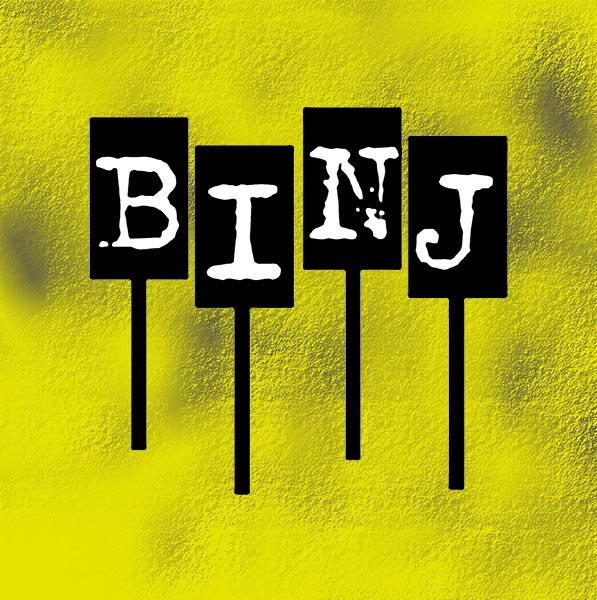Photos by Jason Pramas
Haiti, dance, and healing with Jean Appolon
“It’s been 25 years and I feel like I never made peace with my dad’s tragedy, but somehow my soul got healed through dance.”
When dancer Jean Appolon was 14 and living in Port au Prince, Haiti, his father, a detective with the government there, was targeted and killed in the midst of a violent coup. He was burned, his arms and legs cut from his body. The group responsible for the slaying brought the severed limbs to Appolon’s doorstep and threatened to kill his whole family. At that point his mother arranged for the family to flee the country. In 1993, they settled in Cambridge.
“Dance was the only therapy I had during this time,” Appolon says. “I felt that if I couldn’t dance I would have shut down. Dance really saved my life.”
Looking back on the pain and suffering of his youth, the respected Greater Boston dance instructor recalls a powerful statement from his teacher in his native country: “This situation can destroy your life or it can make you a better person. What happened to your father was traumatic, but you can find a way to heal yourself through dance.”

While movement has deep therapeutic roots and uses in innumerable cultures, Appolon notes that dance — and particularly Haitian folkloric dance, which he teaches, performs and choreographs with his company, Jean Appolon Expressions — is common alternative medicine among Haitians and Haitian Americans.
“A lot Haitians can’t afford therapy,” he explains, referring to couch-style psychotherapy. “We never had a society in Haiti that believes in therapy. We tend to do therapy through family or church. A lot of people will also go to a Vodou priest or pastor, but we have never had a practice of going to a doctor or shrink.”
As Appolon’s dedicated students learn in time, his country’s folkloric dances are rooted in the Haitian Kreyòl tradition, which he notes is increasingly marginalized in both language and culture, as well as in taboo spiritual practices like Vodou. As a result, dances with demonstrable healing powers have been historically devalued and driven underground. Another significant cultural barrier, explains Appolon, is the stigma against men who dance as a result of negative stereotypes associated with male homosexuality and movements that are considered flamboyant. Through it all, he persevered, finding peace in the process.
“When I started dancing and listening to drums and connecting to it, I understood how dance can be therapeutic,” Appolon says. “It’s been 25 years and I feel like I never made peace with my dad’s tragedy, but somehow my soul got healed through dance. Because of dance I became social and engaged and understood that it’s not only me that this happened to — other kids in Haiti have [also] been traumatized a lot.”
Though people outside of the dance community at large may not make the link, traditions like those practiced and taught by Appolon are often deeply political. He continues, referring to everything from the earthquake that devastated Haiti in 2010 to longstanding injustices like poverty and political corruption: “A lot of Haitians have suffered violence happening in Haiti indirectly or directly.” For some, he adds, “dance [is] a very big part of the healing process,” but Appolon still wishes that more folks took a similar approach.
The complexities of dance
Every Saturday afternoon, more than 60 dancers of all ages, levels, and backgrounds — from toddlers to adults, pro dancers to newbies, citizens of the world to local white dudes — pack in tightly in a studio at the Dance Complex in Central Square in Cambridge. Typically six drummers, most of whom hail from Haiti, take center stage, often accompanied by a saxophonist who adds a fresh jazzy edge to the traditional drum-heavy Afro-Haitian rhythms.
Following a warmup that blends ballet with modern and Afro-Haitian styles of dance, Appolon leads the room in lines of four to shake, stomp, and flow across the floor toward the drummers. The movements are intricate, complicated, and highly technical — yet loose and expressive at the same time. Bodies pulse in harmony to robust sounds; kids of all ages fearlessly circle the dancers, their nimble bodies hyper and free from the far less natural stimulation of their regular environments. All things considered, the place feels more like an enormous party than instruction.

Appolon dedicants and Dance Complex regulars at the class maintain that they are there for more than merely exercise and entertainment. Many say the weekly routine is vital to their health, happiness, and even survival. Some say the class is like “going to church,” or that when they dance in this particular space with this group they become their “higher selves.” One Haitian regular says the meetup allows her to “leave all of her junk outside — whatever it is you do, your family life, you drop it at the door and leave it there; you go in and work it out.”
Another frequent participant, Lala Roberts, takes Appolon’s class nearly every Saturday and describes the sessions as “a prescription drug.” Referring to her Dance Complex routine, which also includes West African classes that have strong musical and other similarities to the Haitian class, Roberts adds: “African dance and the drum … brought me inner peace.” The student says she even discontinued taking antidepressants, which she was formerly prescribed. “I don’t need meds,” she says, “this can be my medication.”
Students aren’t alone in relying on these sessions. The class is also a necessity for the instructor. Echoing Roberts and a number of others interviewed for this story, Appolon says the experience is “like medicine … Every time I teach this class I feel that there is some sort of healing process happening.”

Connections
Appolon’s talent has brought success as well as hope, including professional stints in New York. Before starting his own company, he performed with Alvin Ailey and taught with the Boston Ballet. But it’s his work in the community that has seemingly brought the most impact. There’s a “special energy about this class,” he says, “an organic, healing feeling that I don’t even understand that keeps me here.”
During the 11 years that he lived and worked in New York, Appolon traveled back to Boston every weekend just to teach. Other times, the situation is reversed — students who have left the Hub have told him they’ve considered moving back just for his class. A few fans who have left the country still come back and visit.
Michel DeGraff, an MIT linguist from Haiti whose work advocates for teaching and learning Kreyòl in Haitian schools, has been coming to Appolon’s class for more than 10 years with his wife and son. For DeGraff, it’s an opportunity to revitalize at the individual level, but also a way to connect in the social and cultural realms, as the class, in and of itself, serves as resistance to negative stereotypes about Haiti in the mainstream media and society.
“There is this dominant culture in the US, but also in Haiti, that values European norms over their non-European, especially African, counterparts,” DeGraff says. “In Haiti it’s French and Christianity over Kreyòl and Vodou; in the US, it’s W.A.S.P. over everything else, but Jean’s class shows it doesn’t have to be this way. Through dance, you can invert those hierarchies and include everyone’s cultural assets, to the benefit of each individual and of society at large.”
DeGraff goes on to discuss how the class has assisted his son, saying it has helped expose the next generation to Haiti from afar. Appolon, according to DeGraff and others, speaks for marginalized aspects of the Haitian identity which, because of discriminatory practices and policies against Kreyòl culture, isn’t always accessible in dominant realms of Haitian society: “Through Jean’s class I’ve learned so much about who I am as a Haitian. It puts you in a space where you get to practice, understand and value important cultural patterns that people in Haiti are often excluded from because of all kinds of ugly prejudices there.”
DeGraff goes on to extol folkloric dancing for its social justice purpose and the possibilities for larger healing opportunities in his native country: “In a way it would be an anomaly in Haiti to have the kind of respect [found in Jean’s class] not only for Afro-Haitian dance, but for what it represents to people, namely Haiti’s African heritage. Dance traditions rooted in Vodou are not valued by the government and by élite society — and campaigns against vodou by the Catholic Church have tried, in vain, to destroy Vodou. The Bois Caiman woods where the Haitian revolution started with a Vodou ceremony in 1791 are left in derelict in near total abandon, except for the care of a few local activists. Recently a group of Protestant missionaries burned down, with immunity, the sacred tree where the ceremony was hosted.”
Adds DeGraff: “Looking at Afro-Haitian drumming and dance, you cannot contest that Kreyòl is important. Yet in formal spaces like schools, government and the courts, Kreyòl is put down, Vodou is put down. Jean’s class shows us that we can value these aspects of our culture, and we should take these cultural assets and incorporate them into education, government, and other formal spheres where knowledge and power are created and transmitted.”
Faith in healing
Appolon brings his gift back to Haiti each summer, when he leads a two-month program that offers free classes to talented young people who have the potential to be professional dancers but lack the means or support to achieve their dreams. Program participants are given free food and compensation for their hard work, which includes up to eight hours of practice a day plus a performance showcase at the end.
Make no mistake about it — bringing dance to Haiti is a revolutionary act, since dance is hardly considered essential among the middle class in which Appolon was raised. At the same time, the roots of this part of the culture are too deep to deny.

“Haiti was built on dance,” Appolon says. Acknowledging the country’s history in which dance was used in ceremonies to revolt against slavery, he adds, “We got our freedom through dance, [and] people still want to dance this part of their pain [away].”
Though the stakes are considerably lower in his current home of Cambridge, Appolon brings the same powerful message in his work. In a way, his class in Central Square has become a home base from which he can confidently reach people abroad. Speaking of his coming-of-age in the area and current popular class, Appolon says, “Because of the Dance Complex I feel like I can touch other places in the world … I felt like I was given a chance there.”
Because of that support, Appolon proudly remembers, “I was determined, I wasn’t gonna let anything stop me. Even now, with challenges I face with my dance company and going back to Haiti, there are lots of hurdles … but I’m not gonna give up, because if I give up then Haiti’s not gonna have a voice.”










